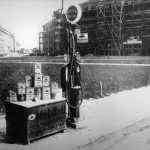One of the most important buildings in Zagreb was officially opened on August 18, 1892.
One of the symbols of Zagreb and one of the most important buildings for travellers, the Main Railway Station, celebrated its 125th birthday yesterday, on August 18.

According to Putovnica.net, it was financed by the Hungarian State Railways, because Croatia was part of Austria-Hungary at the time, and designed by Hungarian architect Ferenc Pfaff. The construction of Zagreb State Railway Station, as it was called until 1924, was approved in 1890 by Emperor Franz Joseph I.

As the part of the city where the station is now located was completely deserted at the time, the City of Zagreb decided to give 25 hectares of space for building purposes free of charge. Architect Pfaff envisioned a Neoclassical, functional, symmetric building, with accentuated central part and decorative elements and statues in its gable.

The building is 186.5 m long and it took one and a half year for the construction to finish. The test ride took place on July 1, 1892, but the official opening ceremony took place on Emperor Franz Joseph’s birthday, on August 18, 1892. After the ceremony, the first train left for Rijeka at 10:35 a.m.

Not only was this one of the crucial events in Zagreb’s history because it connected the capital to the rest of the country, but it also prompted the construction of other important buildings around it, such as the Botanical Gardens, the Central Post Office, and a tram line from the Main Square to the Railway Station.


There were three tracks at the beginning, and six new were added in 1922, and it underwent major renovation process during the 1987 Summer Universiade.


The Esplanade Hotel was built next to it in 1925 to cater for passengers of the famous Orient Express train, on their way from Istanbul to Paris, and it soon became the centre of Zagreb social life, especially in the 1920s.
It is said that the first striptease party in Zagreb was held there.

One of the biggest railway accidents in the region took place at the station on August 30, 1974. A train that was headed from Athens to Dortmund via Belgrade and Zagreb exceeded the speed limit by 70 km/h, and all nine of its cars derailed at 104 km/h, killing162 people, mostly Gastarbeiters from Germany and their families. Many more were not identified, so they were buried in a communal grave at Mirogoj. The locomotive is now on display at the Croatian Railway Museum.

The underpass was built in 1973 and the Importanne Centar, the oldest shopping centre in Zagreb, was opened there in 1994.


All photos from Zagreb – kakav je bio nekada, Facebook.









